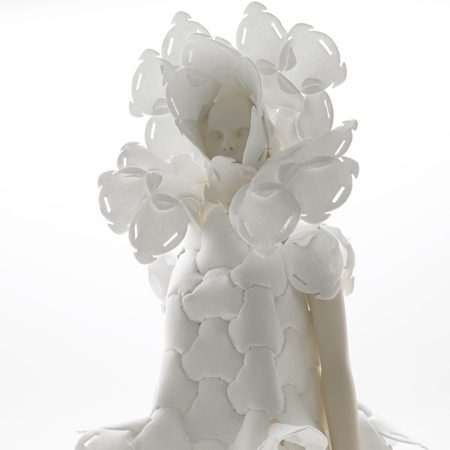
Tokyo Fiber Senseware ’09 in Milan
Milan 09: Tokyo Fiber Senseware '09, an exhibition directed by Japanese designer Kenya Hara, will be on show at La Triennale di Milano in Milan next week.
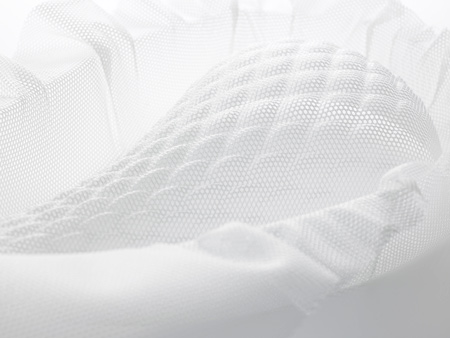
The exhibition is intended to convey the possibilities of new materials developed with Japanese synthetic fiber technology. It will include works developed and designed by over 20 companies, designers and artists, including pieces from designer Ross Lovegrove (above) architect Shigeru Ban (below) and motor company Nissan.

The following captions are provided by Tokyo Fiber:
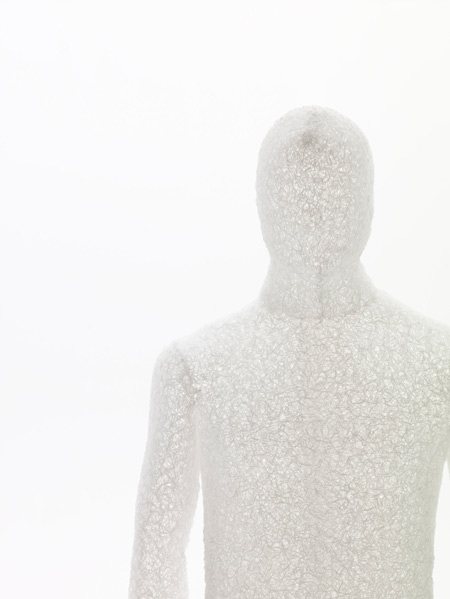
Above and below: TOYOBO, 3D SPRING STRUCTURE by Yasuhiro Suzuki
Material: BREATHAIR®
Material description: BREATHAIR® is a new type of cushioning material formed of highly elastic mono-filament into a random-coil shape.
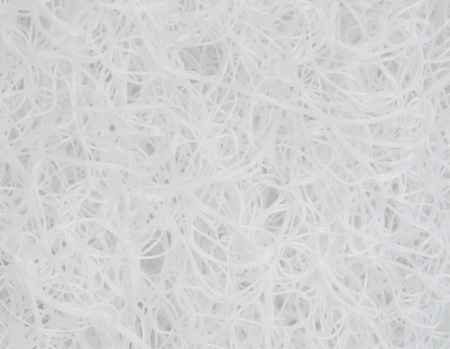
Being 95% air, the material is lightweight with superior durability and the capability to maintain its elasticity.
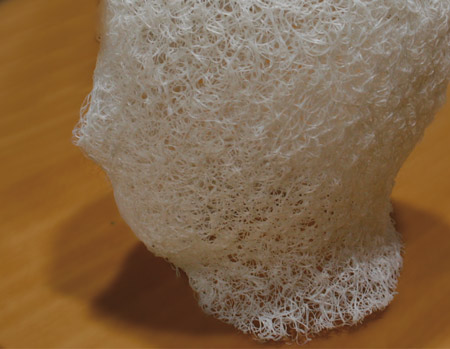
It is also washable with good permeability and drainability to preserve cleanliness.
Work concept: Breathing mannequin frame.
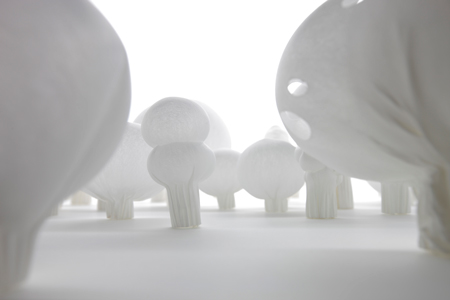
Above and below: ASAHI KASEI, HIGHLY THERMOPLASTIC NON-WOVEN FABRIC by nendo
Material: SMASH™
Material description: SMASH™, a special polyester filament non-woven fabric, has the advantage of its thermoplasticity and its shape can be easily changed when heated.
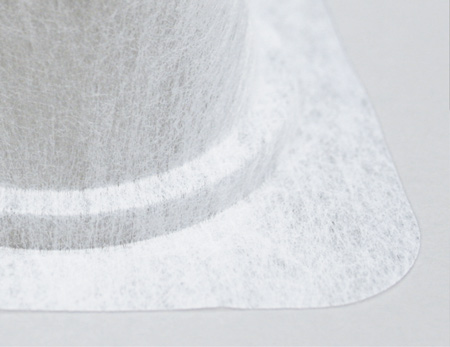
It is a non-woven highly functional fabric, which can be moulded using a hot press process.
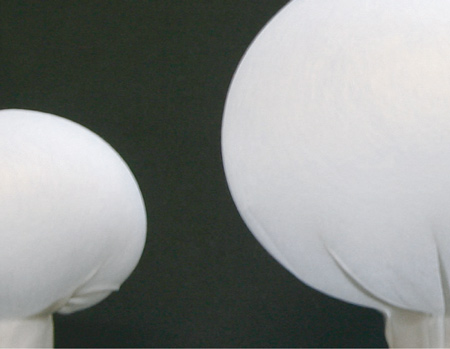
The material does not tear easily and has superior permeability as well as excellent print quality thanks to its smooth surface.
Work concept: Paper lantern blown up like a balloon.
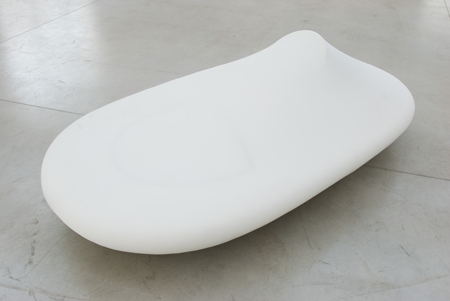
Above and below: ASAHI KASEI, MULTI-LAYERED STRETCH FABRIC by Antonio Citterio
Material: FINEX®
Material description: FINEX® is a specialized stretch material having a double or triple-layered structure, which uses the polyurethane elastic fiber ROICA® in joints.
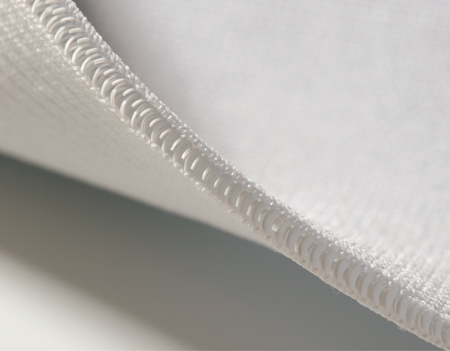
It is light, soft with high permeability and may be used to create reversible or three-dimensional structures.
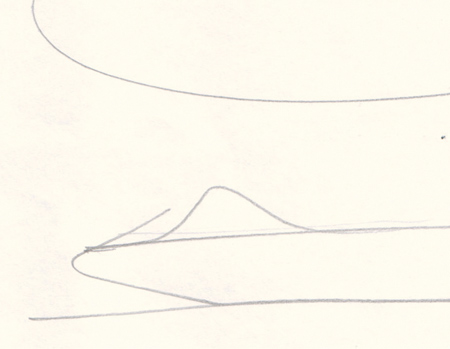
The stable shape prevents fraying and curling of the fabric edges and is suitable for casting moulds.
Work concept: Sofa with electric headrest.
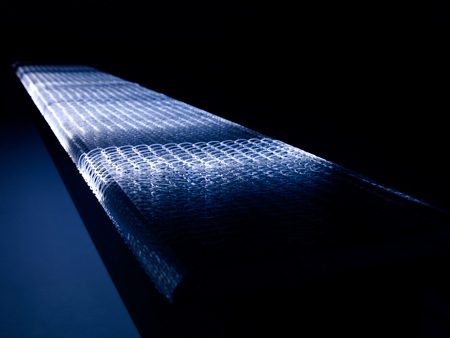
Above and below: MITSUBISHI RAYON, PLASTIC OPTICAL FIBER by Gwenael Nicolas (CURIOSITY)
Material: ESKA
Material description: The luminous fiber ESKA is an optical fiber made with plastic.
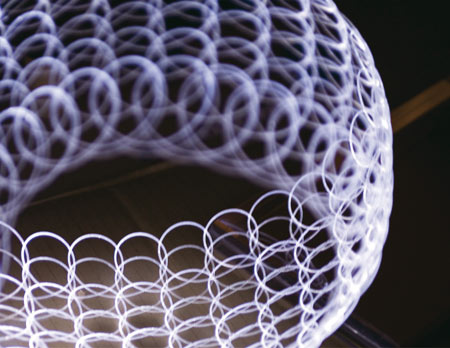
It differs from the quartz-type and is easily used in large-diameter processes as well as flexible and easy to work with.
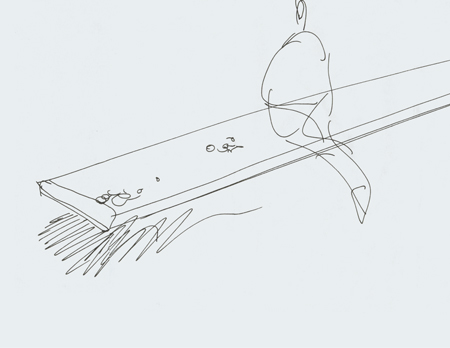
The transfer functions for light through its fibers are not limited to communication applications, but may also be applied for illumination to set a soft impression. Work concept: Luminous bench “ Light Fiber Bench”.
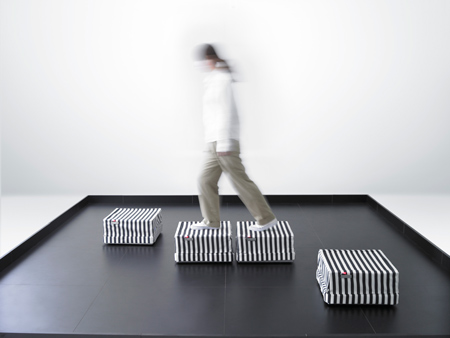
Above and below: KURARAY, CONDUCTIVE FIBER by Hiroo Iwata
Material: KURALON® EC
Material description: KURALON® EC complexes nano-size metallic fine particles into a fiber and raises conductivity by reducing the distance between particles and broadening the conductive area.
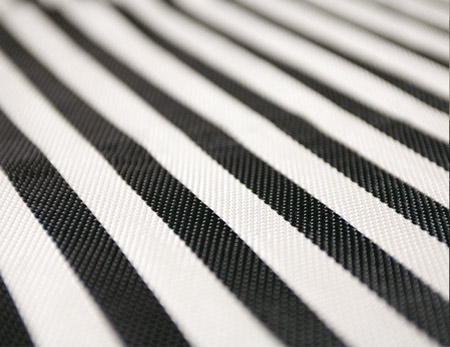
Also, because it has conductive function inside its fibers, the material is able to prevent a decline in conductivity due to flexing, friction, and salt corrosion, the conventional issues related to conductive fibers, and can enlarge the applicable area.
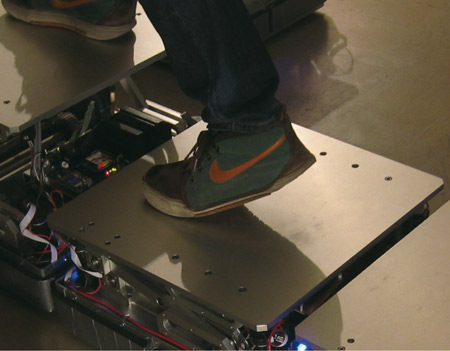
Work concept: Robot tile employing a textile switching device.
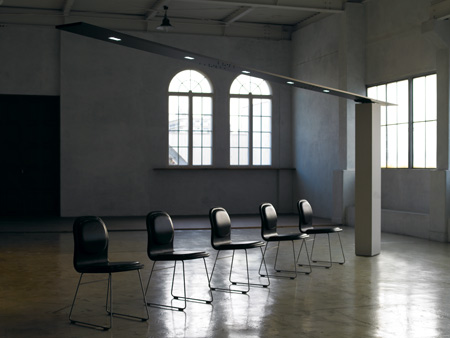
Above and below: TORAY, CARBON FIBER by Jun Aoki
Material: TORAYCA®
Material description: The carbon fiber TORAYCA® is a fiber made by carbonizing a special acryl raw material at a high temperature.
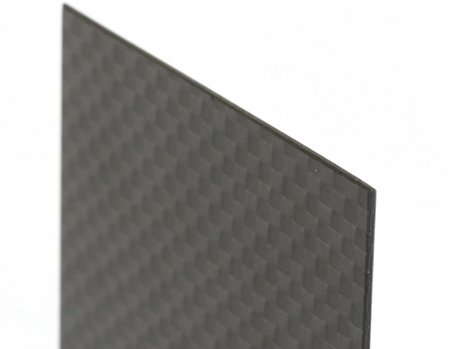
This super fiber is stronger and lighter than steel and can even withstanding bending.
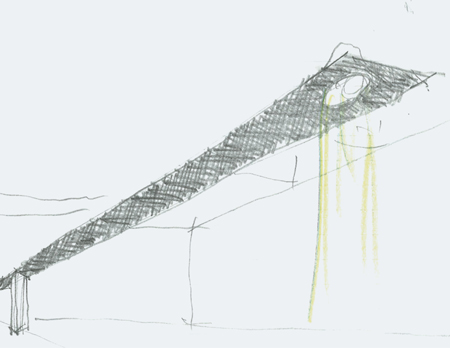
It may be compounded with plastics and other materials as necessary for use and purpose, and has been applied to a variety of areas, which demand strength and lightness, from satellites to fishing rods.Work concept: Ultra-long arm lighting fixture.
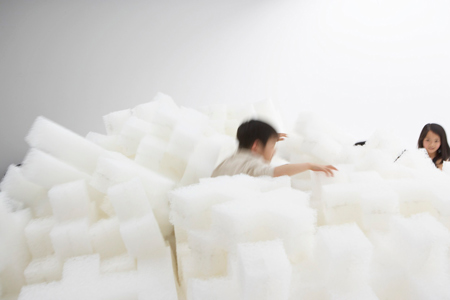
Above and below: TOYOBO, 3D SPRING STRUCTURE by Kashiwa Sato
Material: BREATHAIR®
Material description: BREATHAIR® is a new type of cushioning material formed of highly elastic monofilament into a random-coil shape.
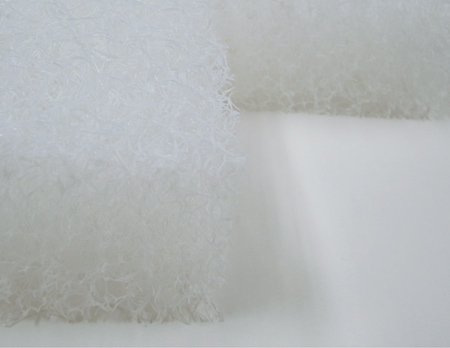
Being 95% air, the material is lightweight with superior durability and the capability to maintain its elasticity.
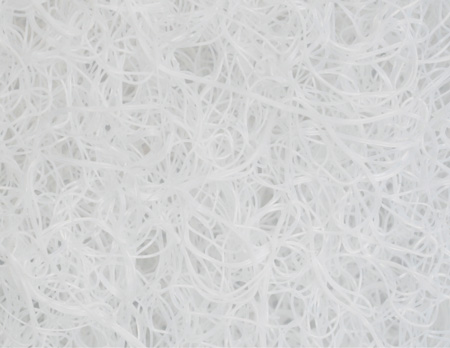
It is also washable with good permeability and drainability to preserve cleanliness. Work concept: Toys comprising visible air.
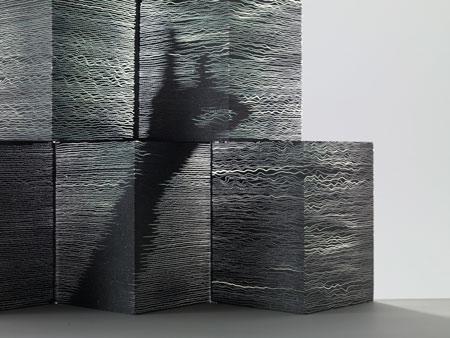
Above and below: MITSUBISHI RAYON, PLASTIC OPTICAL FIBER by Kengo Kuma
Material: ESKA
Material description: The luminous fiber ESKA is an optical fiber made with plastic.
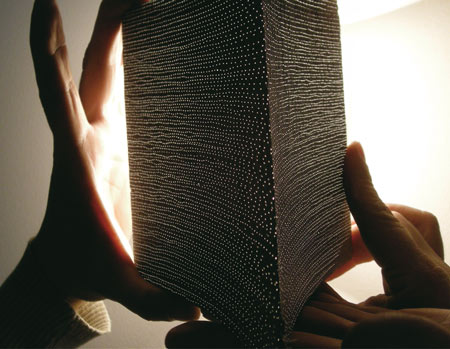
It differs from the quartz-type and is easily used in large-diameter processes as well as flexible and easy to work with.
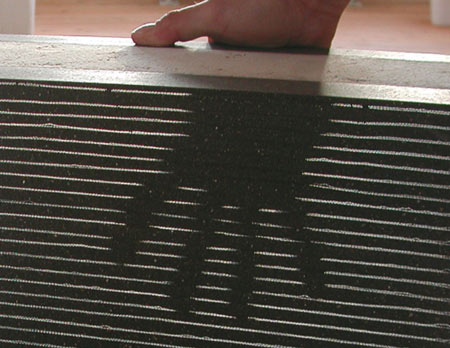
The transfer functions for light through its fibers are not limited to communication applications, but may also be applied for illumination to set a soft impression. Work concept: Light penetrable concrete construction.
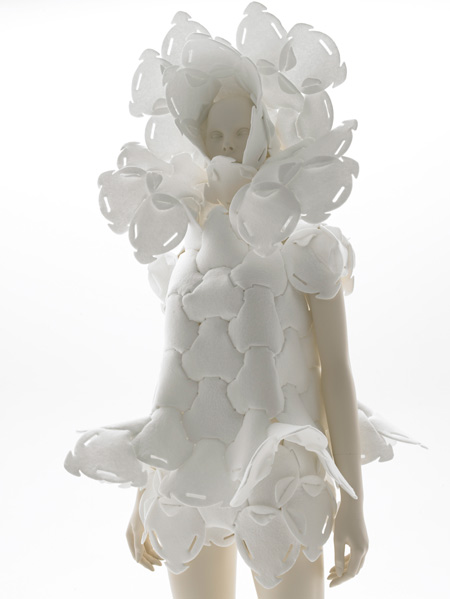
Above and below: KURARAY, TUNABLE NONWOVEN FABRIC by Kosuke Tsumura
Material: FELIBENDY™
Material description: FELIBENDY™ has air-permeability, water absorbability, acoustic absorbability, stretch-ability and other properties, and is a non-woven highly functional fabric with the capability of tuning its comfort to the human body.
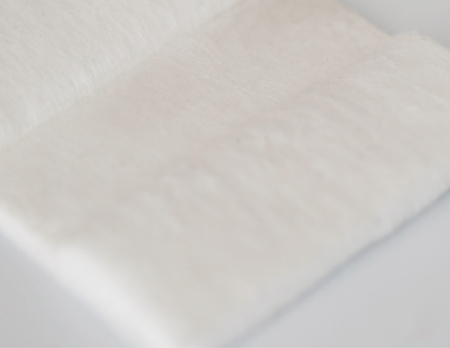
Created using a steamjet manufacturing process, the material is extremely lightweight, highly processible and has superior three-dimensional formability.
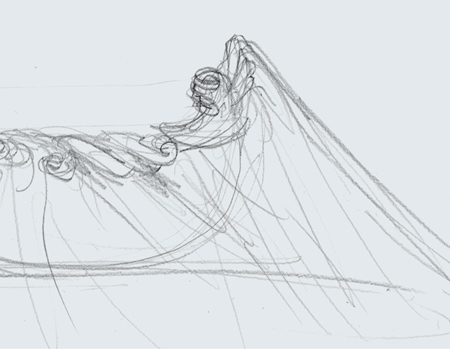
Here, softness and hardness are manifest simultaneously in one material.
Work concept: Cocoon cradle welcoming a newborn baby.
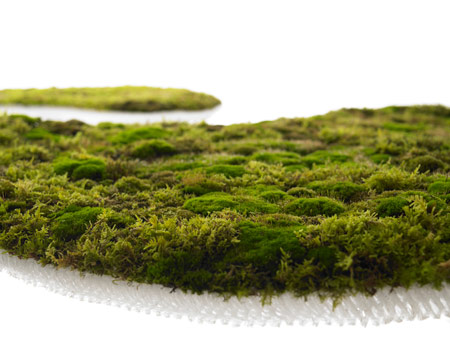
Above and below: UNITIKA, BIODEGRADABLE 3D MATERIAL by Maketo Azuma
Material: TERRAMAC®
Material description: TERRAMAC®, which is made from poly-lactic acid primary material of which is plants, is a biodegradable fiber that returns to the soil.
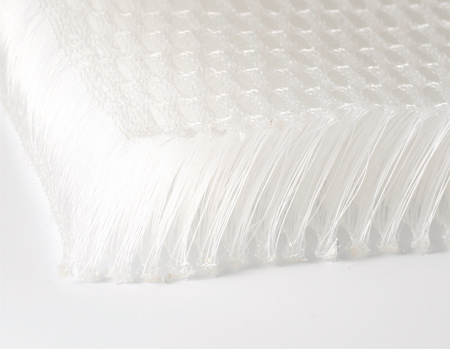
TERRAMAC® ’s conformational material integrates with nature and is environmentally friendly.
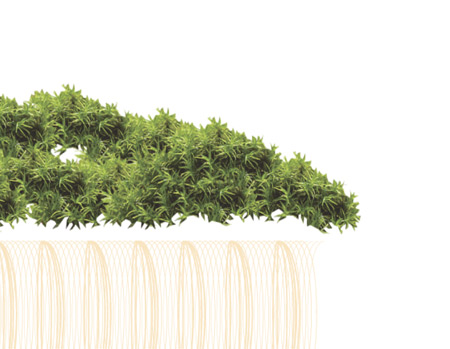
The carbon material it contains within has been captured from the air by plants through the process of photosynthesis, and does not increase CO2 in the atmosphere even when incinerated. Work concept: Planter for moss wafting in midair.
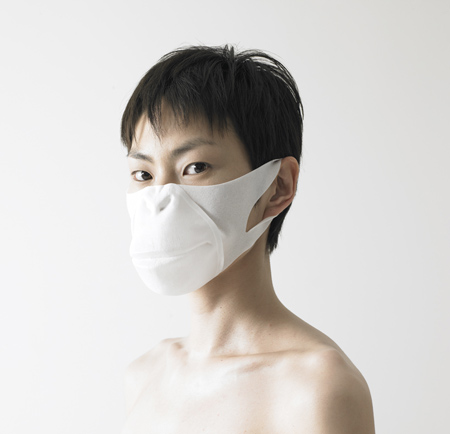
Above and below: ASAHI KASEI, HIGHLY THERMOPLASTIC NONWOVEN FABRIC by mintdesigns
Material: SMASH™
Material description : SMASH™, a special polyester filament nonwoven fabric, has the advantage of its thermo-plasticity and its shape can be easily changed when heated. It is a nonwoven highly functional fabric, which can be moulded using a hot press process.
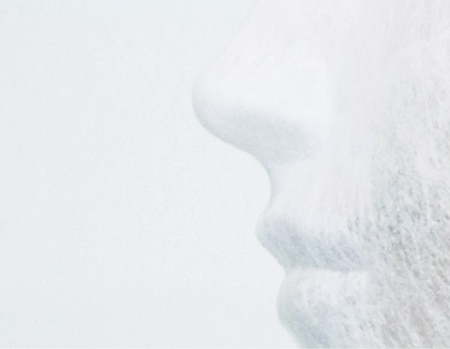
The material does not tear easily and has superior permeability as well as excellent print quality thanks to its smooth surface.
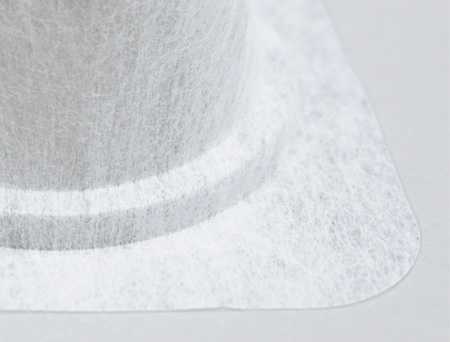
Work concept: Mask modelled in the face of human and animal.
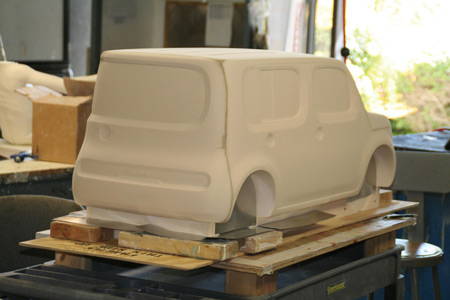
Above and below: ASAHI KASEI, HIGH-STRETCH TRICOT by NISSAN
Material : ROICA®
Material description : This is a stretch tricot made of ROICA®, a polyurethane elastic fiber with a higher intensity for lengthening and stretching than rubber.
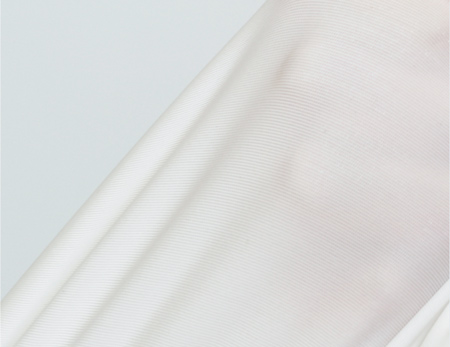
ROICA®, which has a supple stretch and excellent recoverability, has been developed into threads varying from thin to thick, a range which would be difficult to achieve with rubber.

Work concept: Laughing vehicle wrapped in stretch fabric.

Above and below: SAKASE ADTECH(fabric) , UNITIKA(fiber), TRIAXIAL WOVEN FABRIC by Ross Lovegrove
Material: T.W.F (fabric), MELSET™(fiber)
Material description: In contrast to conventional textile fabrics where the double spindle of warp and weft intersect at 90°, Tri-axial woven fabric consists of a configuration similar to a reticulate arrangement where the weft intersects diagonally at 60° with two warp strands.

It is extremely lightweight as the load is dispersed three ways and has application in everything from aerospace engineering to everyday products.
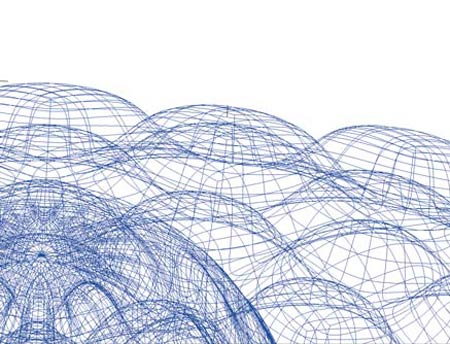
Work concept: Ultra lightweight backpack “ Teardrop”.

Above and below: TEIJIN, CARBON FIBER by Shigeru Ban
Material: TENAX®
Material description: TENAX®, a carbon fiber from the raw material acrylonitrile is a strong, light and supple super fiber with high electrical conductivity.
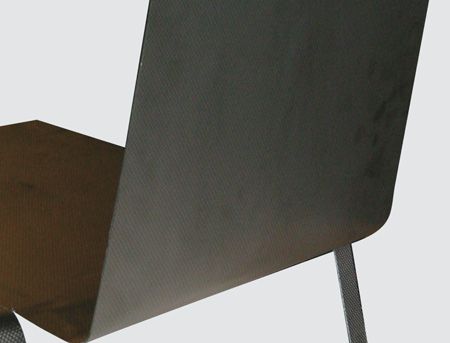
This composite material, which integrates metal, resin, ceramic and other materials, has contributed to energy-savings and the creation of next generation lightweight aircraft and automobiles.
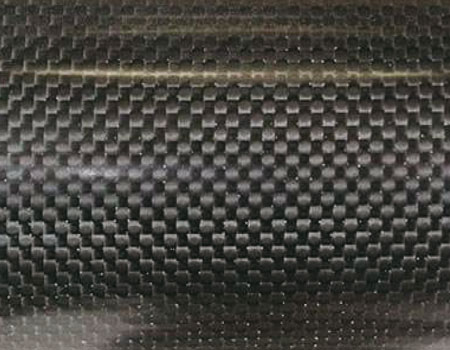
Work concept: Super thin / light-weight chair using carbon fibers.
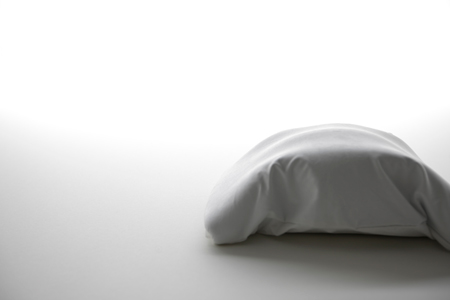
Above and below: TEIJI, NANO FIBER by Panasonic Corporation Design Company
Material: NANOFRONT™
Material description: NANOFRONT™ is a polyester fiber with a diameter of 700 nanometers, 1/7500 of the thickness of a piece of hair.
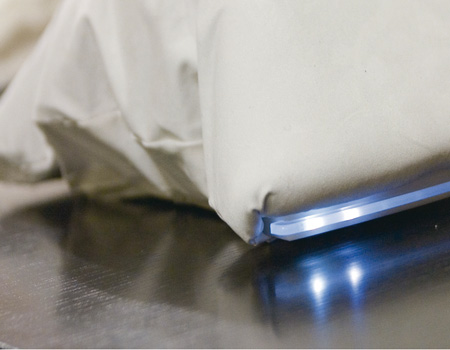
This fabric made of invisible nanofibers has a surface area and pore structure, which is tens of times the size in conventional fabrics, so it demonstrates superior wiping capability, absorbing oil film and fine dust smaller in size than a micron.
Work concept: Wiping robot.
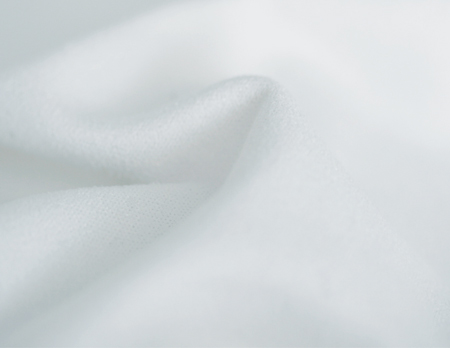
Tokyo Fiber ‘09 Senseware takes place 22-27 April at La Triennale di Milano.
22-27 April 2009
La Triennale di Milano
Viale Emilio Alemagna, 6
20121 Milano
tel. +33 46 10 07 07
See all our stories from Milan in our special MIlan 2009